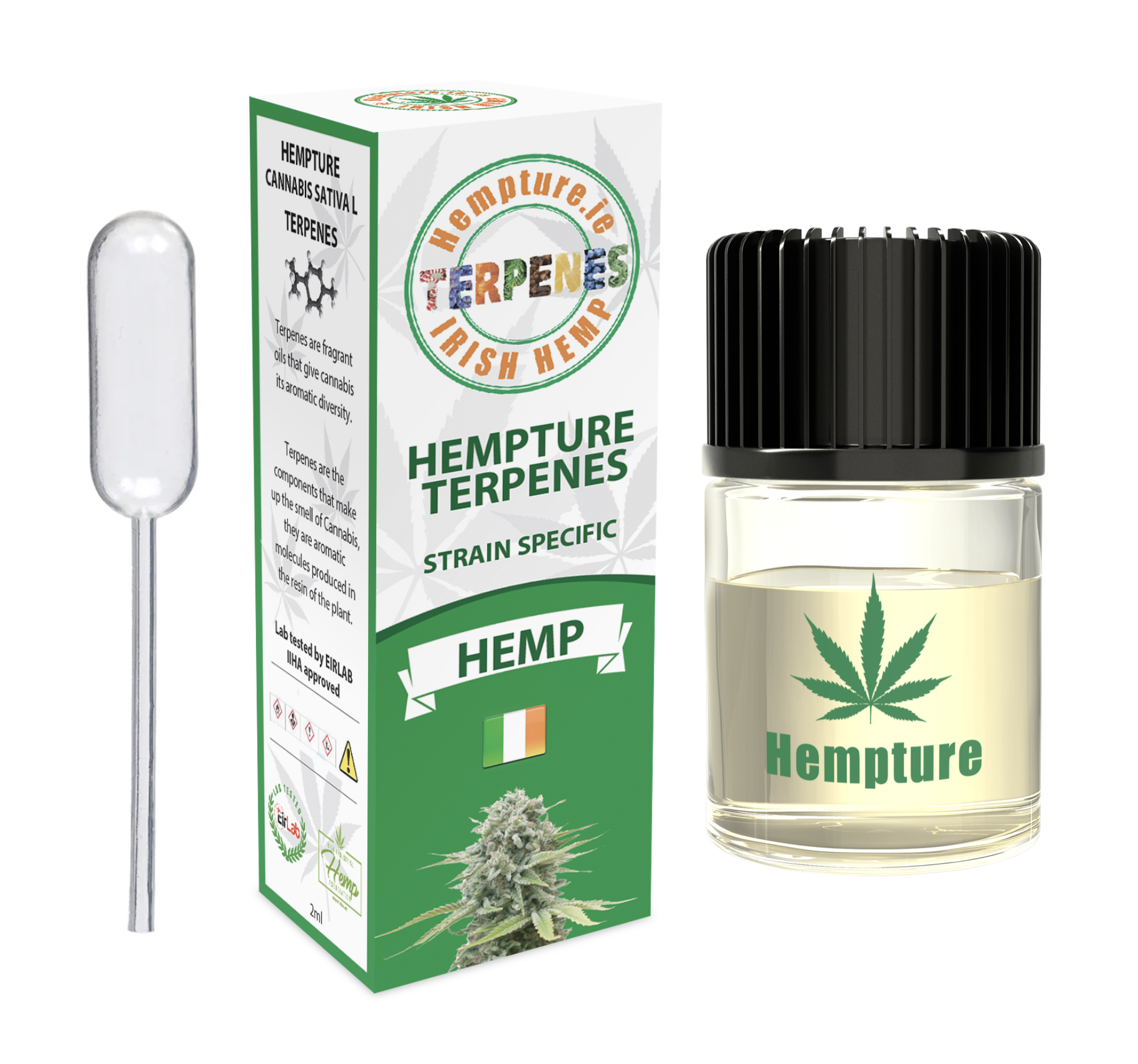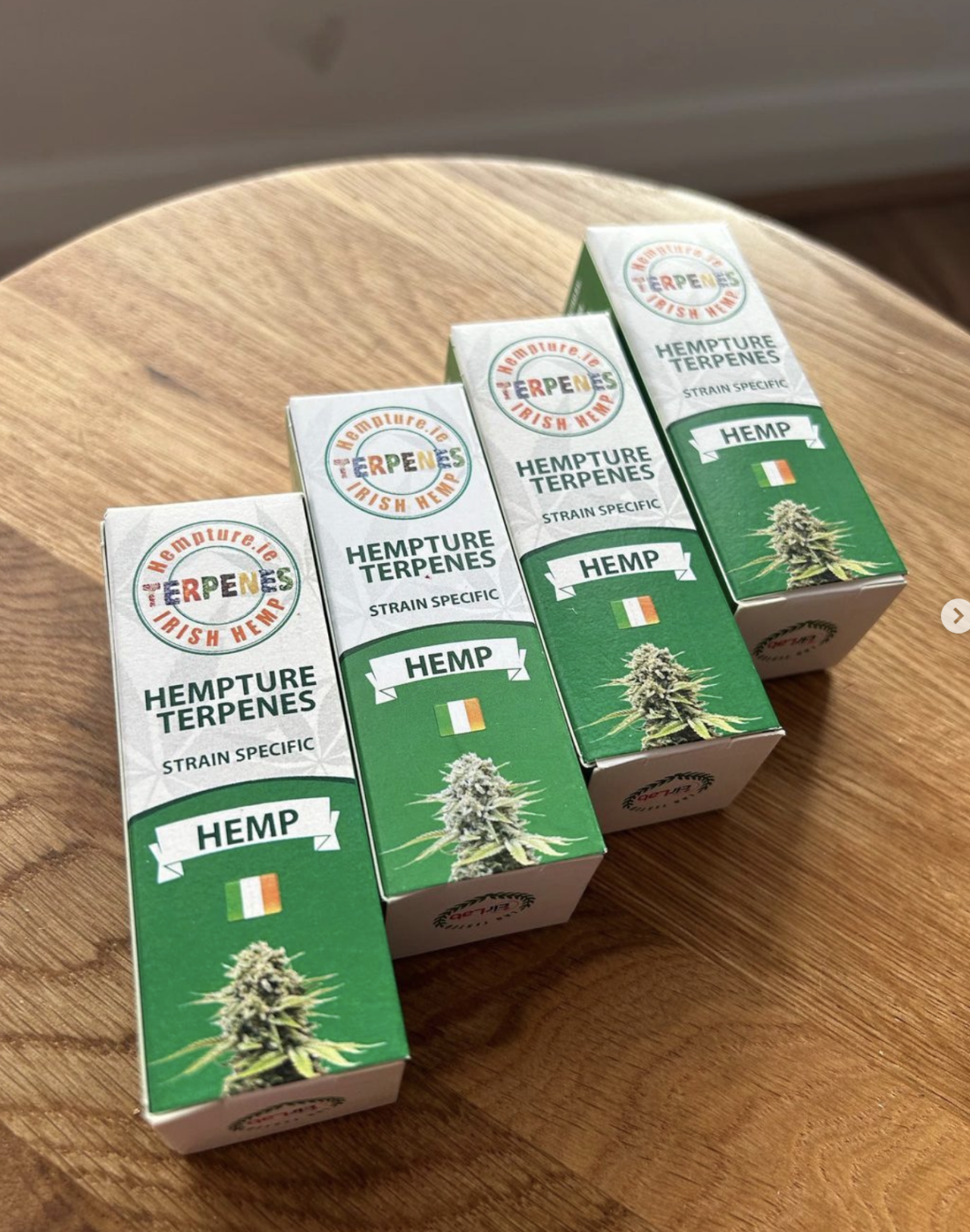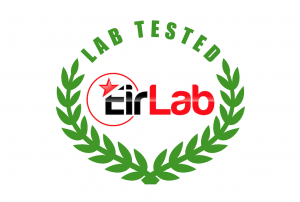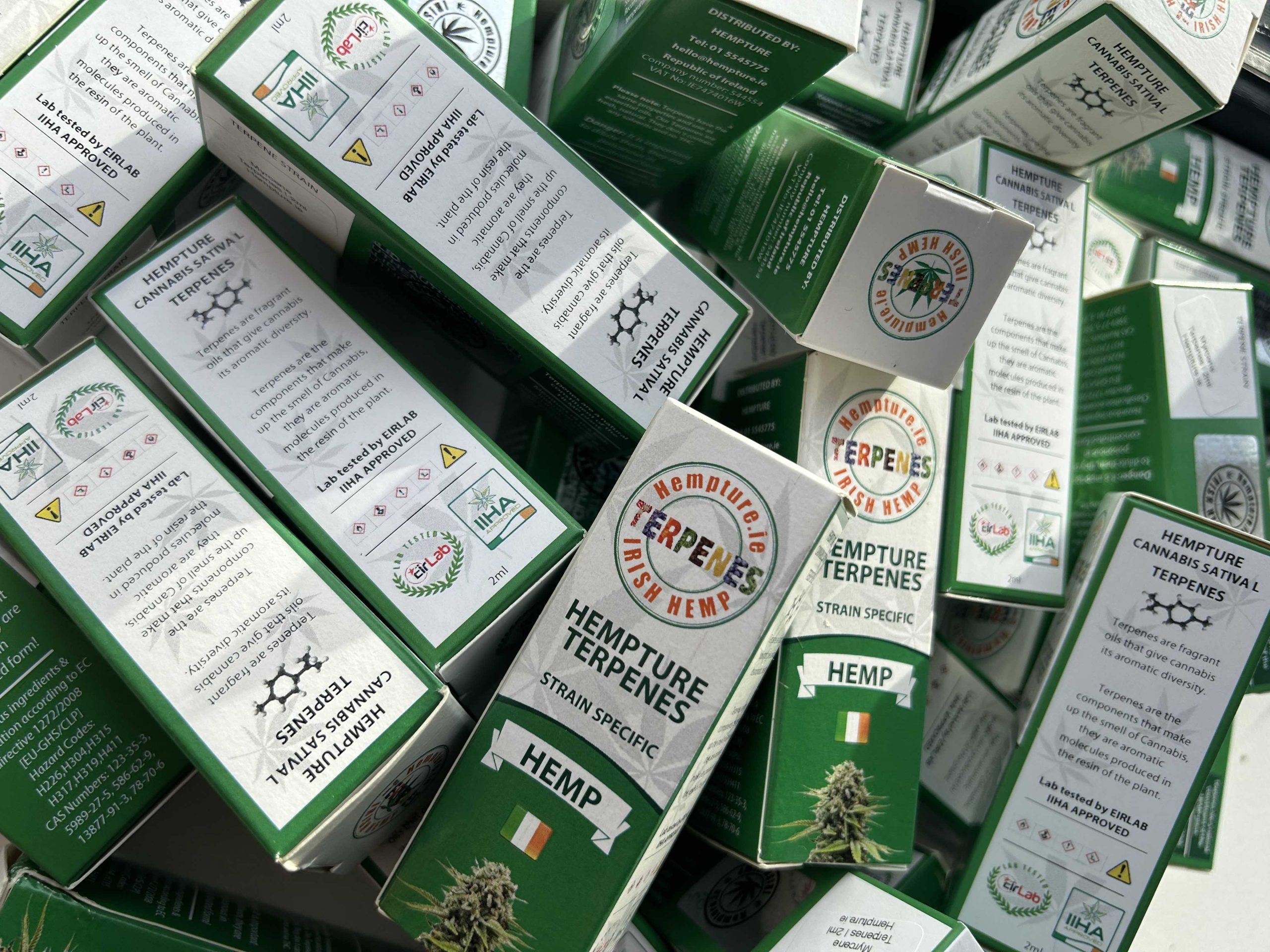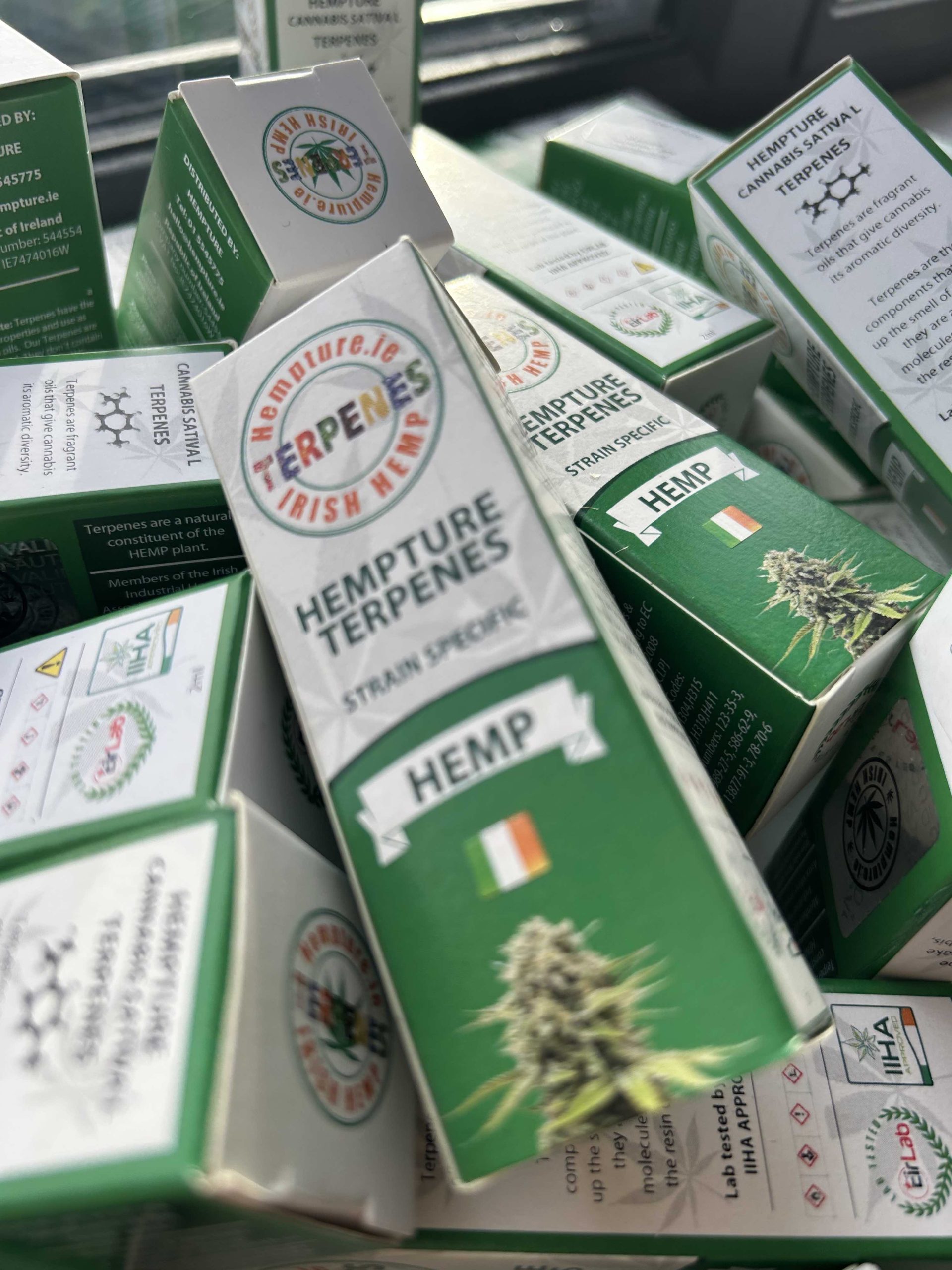P-Cymene Terpenes
Our isolated Cannabis Terpenes are completely raw and undiluted, they can be used individually in your product to harness each terpene’s unique effect or combined in different terpenes.
In nature terpenes do not occur in isolation. Individual plants produce a variety of types of these molecules that come together to form what is called a terpene profile. Research has revealed that terpenes possess significant wellness properties.
Terpenes/terpenoids have a wide range of biological and pharmacological activities, for instance, antifungal, antiviral, anticancer, anti-inflammatory, antihyperglycemic, antiparasitic, antioxidant, and antimicrobial.
Other than Cannabis, p-cymene also known as p-cymol or p-isopropyltoluene is also present in several food-based plants such as carrots, orange juice, grapefruit, tangerine, raspberries and several spices including cumin and thyme. The aroma is woody, spicy and musty with hints of sweet citrus.
Common plants containing p-cymene are anise, cannabis, coriander, and cumin. In small quantities, cymene has a pleasant odor described as citrus, woody, sweet and earthy but can be overwhelmingly harsh and turpentine-like in strong concentrations. For this reason, cymene is used in the perfume industry and added in small amounts to cleaning products.
Cymene also alters how other aromatics smell and taste, leading to its usage in the food and beverage industry as a flavor additive. Like most terpenes, cymene adds a woody, earthy, slightly menthol aspect to the taste and smell of cannabis. Cymene is only present in small amounts in a few strains of cannabis. Still, due to the entourage effect, cymene’s presence can significantly impact the type, length, and intensity of the “high” experienced.
Cymene has shown promise in many therapeutic applications, including anti-inflammatory, antibiotic, anti-tumor, and pain-killing abilities. However, the usefulness of cymene as a medication is limited by a half-life within the human body of only 40 minutes. Ongoing research aims to prolong the effects of p-cymene and enable its use as a medication for various illnesses.
The Benefits Of Cymene
Similar to many terpenes like Geraniol, Camphene, and Ocimene, Cymene is an anti-inflammatory.
It has also been found beneficial in the fight against cancerous tumors.
The analgesic properties of the terpene assist in numbing and soothing pain.
Because it is a natural antioxidant, the anti-bacterial properties make it a contender in fighting antibiotic resistant infections. Subsequently those properties make it an important ingredient in topicals. Evidently it has been discovered to be effective against candida.
As A Neuroprotectant
In low doses it was found to affect neurotransmitters which helped improve memory, attention and motivation. Unquestionably this could be a treatment option for those who suffer from attention and mood disorders.
It has also been discovered that Cymene stimulates appetite and has been used in recovery from cancer treatment as well as eating disorders.
Antibacterial
Thyme oil is actually a common constituent of cleaning detergents; cymene is a key component of this oil [2].
Furthermore, cymene, in combination with carvacrol, a monoterpenoid phenol, was found to inactivate E.coli in apple juice [3], which could imply a synergetic relationship that is in line with the idea of the entourage effect.
Anti-Inflammatory and Analgesic
Cymene has demonstrated anti-inflammatory and analgesic properties in two separate studies on mice. In the first one, the terpene proved to slow down the onset of pain [4], and in the latter, the mechanism behind these properties was traced back to cymene’s activity on the opioid system and inflammatory cytokines [5]. This is in line with another study’s findings, which revealed cymene modulates in vitro and in vivo cytokine production; as pain reduction was “mediated by the activation of opioid receptors,” the authors suggested “involvement of descending pain-inhibitory mechanisms.” [6]
Antioxidant and Neuroprotective
Cymene has also been described as a natural antioxidant by Brazilian scientists [7], and as such, it has also been found to exhibit neuroprotective properties by reducing oxidative stress in brain cells [8].
Anti-Cancer
Cymene has been combined with metallic agents (e.g., osmium or ruthenium) to form complexes explored as an anti-cancer agents on laboratory-produced human cells. Organometallic cymene managed to induce cell death via apoptosis in ovarian cancer [9] and lung cancer [10], giving scientists a reason to believe in its anti-cancer potential and interest in future research.
With extraction innovations and our understanding of cannabis constantly advancing, generally low levels of cymene in cannabis can likely be overcome, opening avenues for cannabinoid and terpene mixology and optimal synergetic therapeutic benefits.
References:
Marchese A, et al. Update on monoterpenes as antimicrobial agents: A particular focus on p-cymene. Materials (Basel). 2017;10:947. doi:10.3390/ma10080947. Journal Impact Factor = 3.057; Times Cited = 39
García CR, et al. Antimicrobial activity and chemical composition of Thymus vulgaris, Thymus zygisand Thymus hyemalis essential oils. Food Control. 2008;19(7):681-687. Journal Impact Factor = 4.258; Times Cited = 466
Kiskó G, Roller S. Carvacrol and p-cymene inactivate Escherichia coli O157:H7 in apple juice. BMC Microbiol. 2005;5(1):36. Journal Impact Factor = 2.989; Times Cited = 125
Bonjardim L, et al. Evaluation of the anti-inflammatory and antinociceptive properties of p-cymene in mice. Zeitschrift für Naturforschung C: A Journal of Biosciences. 2012;67(1-2):15-21. Journal Impact Factor = 1.238; Times Cited = 42
de Santana MF, et al. The anti-hyperalgesic and anti-inflammatory profiles of p-cymene: Evidence for the involvement of opioid system and cytokines. Pharm Biol. 2015;53(11):1583-90. Journal Impact Factor = 2.971; Times Cited = 24
Weiting Z, et al. p-Cymene modulates in vitro and in vivo cytokine production by inhibiting MAPK and NF-κB activation. Inflammation.2013;36(3):529-37. Journal Impact Factor = 4.953; Times Cited = 32
de Oliveira TM, et al. Evaluation of p-cymene, a natural antioxidant. Pharm Biol. 2014;53(3):423-8. Journal Impact Factor = 1.241; Times Cited = 43
Liu Y, et al. Aromatic monoterpenoid glycosides from rattan stems of Schisandra chinensis and their neuroprotective activities. Fitoterapia. 2019;134:108-112. Journal Impact Factor = 2.527; Times Cited = 1
Păunescu E, et al. Anticancer organometallic osmium(II)-p-cymene complexes. ChemMedChem. 2015;10(9):1539-47. Journal Impact Factor = 3.124; Times Cited = 14
Bhatti MZ, et al. Anticancer activity and mechanism of bis-pyrimidine based dimetallic Ru(II)(η 6-p-cymene) complex in human non-small cell lung cancer via p53-dependent pathway. J Inorg Biochem. 2019;194:52-64, Journal Impact Factor = 3.212; Times Cited = 3
Full details: P-Cymene MSDS (PDF)
View: Cannabinoid and Terpenes Guide
Package contains: 2ml Glass Vial of Terpenes
